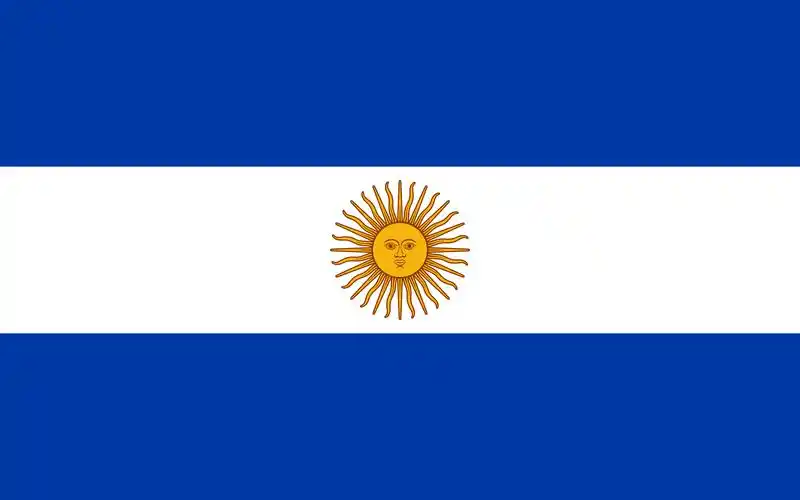Overview of Argentina

Overview of Argentina
Geographical location and area
Argentina is located in the southeastern part of South America, facing the Atlantic Ocean to the east, Antarctica across the sea to the south, Chile to the west, Bolivia and Paraguay to the north, and Uruguay and Brazil to the northeast. With a land area of 2.7804 million square kilometers, it is the second largest country in South America.
historical background
Before the 16th century, it was inhabited by Native Americans and became a Spanish colony in the mid-16th century. On May 25, 1810, the May Revolution against Spanish colonial rule broke out and the first government committee was established. In 1812, Jos é Francisco de San Martin Martos led the Argentine people to resist the Spanish colonial army and declared independence on July 9, 1816. The Federal Republic was established in 1853, and the fourth revised constitution in 1994 established Argentina as a federal state, implementing representative democracy.
Political system
Argentina is a presidential federal republic that practices representative democracy. The current president is Javier Millet.
Population and ethnicity
In 2022, the population of Argentina was 45.89 million. The main ethnic groups include Hispanics, Italians, and Native Americans, with the Mapuche being the largest Native American ethnic group. The official language is Spanish.
major city
The main cities include Buenos Aires, Rosario, La Plata, Mar del Plata, and Cordoba.
Economic Overview
Argentina is a country with strong comprehensive national strength in Latin America, with a complete range of industries and developed agriculture and animal husbandry. The main exported agricultural products include wheat, corn, sorghum, soybeans, beef, etc. Rich in mineral resources, mainly including oil, natural gas, copper, gold, uranium, etc. The service industry accounts for a large proportion of the economy, with developed financial and tourism industries.
Cultural characteristics
Argentine culture is deeply influenced by Europe, especially the cultural traditions of Italy and Spain. Football is the most representative sport in Argentina, having won multiple World Cup championships.
Natural resources and environment
Argentina has a diverse natural environment, with climates ranging from frigid to subtropical. The main rivers include the Laputa River and its tributaries. Rich in mineral resources, mainly including oil, natural gas, copper, gold, uranium, etc. High forest coverage and abundant water and fishery resources.
The Argentine economy performed poorly in the first half of 2024, with the poverty rate rising to 52.9%, an increase of 11 percentage points from the second half of 2023. Despite this, the Argentine government has successfully achieved a fiscal surplus for the first time since 2008 through a series of reform measures, including dismissing government officials, lowering wages and pensions, and devaluing the peso. In addition, Argentina's inflation rate has decreased, with an inflation rate of 236.7% in August, up 4.2% month on month, but the monthly inflation rate has dropped to 4%, the lowest since January 2022.
Main economic indicators
GDP: In the first half of 2024, Argentina's GDP declined by 1.70% month on month.
Inflation rate: The inflation rate in August was 236.7%, up 4.2% month on month, but the monthly inflation rate dropped to 4%.
Fiscal situation: Argentina has achieved consecutive months of fiscal surplus, which has not been seen since 2008.
Economic policies
The Argentine government has taken a series of measures to address economic challenges:
Fiscal reform: laying off hundreds of government officials, lowering wages and pensions, and cutting fiscal spending.
Monetary policy: depreciate the peso by more than 50%, implement capital controls, adopt a "crawling peg exchange rate system", and set the official exchange rate of the peso to depreciate by 2% per month.
Interest rate adjustment: The Argentine central bank has lowered its benchmark interest rate from 40% to 35% in response to a decrease in liquidity environment and inflation expectations.
Future prospects
The Argentine government predicts that the economy will rebound in 2025, with GDP growth expected to be 5%, of which industry, trade, and agriculture will grow by 6.2%, 6.7%, and 3.5%, respectively. In addition, the Argentine government predicts that the total export value will reach 104 billion US dollars and the total import value will reach 83 billion US dollars next year, an increase of 7.7% and 14.2% respectively, attracting investment growth of 9.9%. Despite facing challenges, the Argentine government has promised to eventually lift capital controls and insists that inflation rates will soon reach 2% per month.

